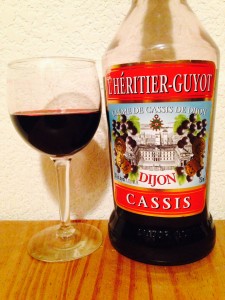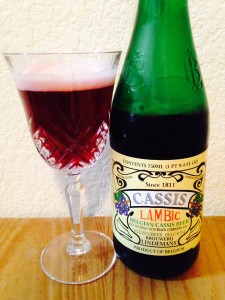Ingredient Feature: Currants

I thought it might be interesting to periodically profile an ingredient often used in cider and/or mead and the incarnations it can take. Guess we’ll find out if that impulse is productive…
Of the ingredients I’ve tried in making fruit meads (aka, melomels), the Blackcurrent/Black Currant has proven the most interesting thus far.
The blackcurrant plant is a temperate shrub which produces berries whose flavor is unique, spicy, and very sharp. I say unique primarily because, unlike in Northern Europe, currants fell out of favor in North America. In fact, they were banned in the early 1900’s due to being a disease vector for a form of pine rust, and have never really recovered here as a large-scale, commercial crop.
Loaded with polyphenol compounds–of which tannins are a member–and acidity, blackcurrant puree adds a strong, vinous character to meads and ciders which responds well to aging and to oaking. It also adds a beautiful, rich purple tinge to whatever liquid you add it to…for what that’s worth. Red currants–e.g., the Red Lake Currant–are a similar variety with a bit less dark intensity.
While blackcurrant–a.k.a., cassis–is relavitely rare in the U.S. beverage market, I’ve started to see it crop up recently of late. Here are a few commercial examples I’ve come across:
-
Crème De Cassis–a syrupy-sweet liquor made from distilled blackcurrant. Unbearable sweet by itself, but mixes readily into coctails such as Kir–wine with crème de cassis.
- Peckham’s Cider Kir–turns out dry cider is just as good as wine when it comes to Kir. This cider is no exception. I’ve tried it, it was great, and no, I didn’t have the discipline to review it. I intend to remedy that soon…
- Lindemans Cassis Lambic–this is a tart, lambic beer brewed with wild yeast and cassis. It’s tart, funky, extremely complex, and a little bit confusing–the malty backbone competes a bit with the vinous nature of the cassis in my opinion, and while it’s multi-layered and highly interesting, I feel like blackcurrant comes through best when mixed with other fruits
As far as non-commercial beverages go, Vintner’s Harvest blackcurrant puree is available for home wine and mead-makers which can make a mean melomel (mead made from a combination of honey and fruit) with some red wine characteristics….I have a melomel aging at the moment, and have high hopes for it. My only concern is that the large amount of the puree I used–96 oz in a 5 gallon batch–is currently overwhelming the flavor of the accompanying honey, both in terms of currant flavor and also in terms of its intense tartness–there’s probably a reason you won’t find many bone-dry currant/cassis drinks out there–sugar is needed for balance. Hence why you see cocktails like Kir, with dry wine or cider mixed with a lesser volume of very sweet creme de cassis.
Worst case, I’ll have to back-sweeten the melomel with more honey, but that’s relatively easy to do after stabilizing it with Campden Tablets (Potassium Metabisulfite) and Potassium Sorbate to prevent further fermentation before adding more sugar…without stabilizing, the yeast just wake back up and consume the additional sugar, with consequences ranging from just more alcohol to carbonation to exploding bottles if you bottled the mead after adding more sugar but without stabilizing.
–
Thanks for visiting The Cidersage Blog. If you found this content to be useful, consider subscribing via the Subscribe link in the side bar, and be sure to visit our resources and tutorials pages for more in-depth hard cider and mead information.


Leave a comment